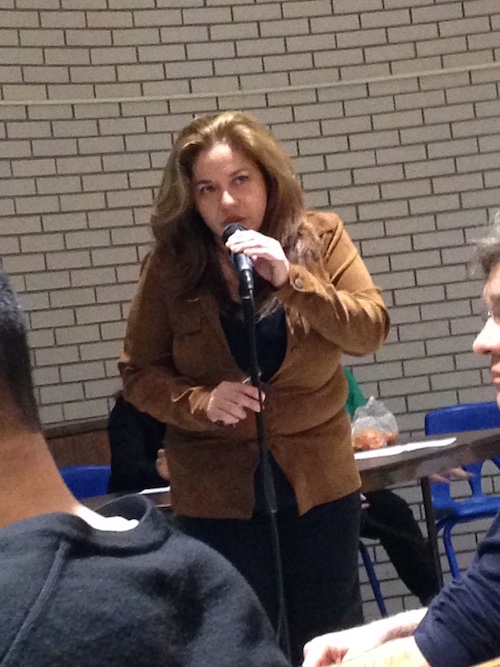
Marielle Anjula speaks at a meeting about school segregation on the Upper West Side.
By Jessica Brockington
An alternative plan to traditional school zoning lines, called “controlled-choice,” was introduced to Upper West Side and Harlem parents on March 1 at an information session gathered by the Zoning Committee of CEC3 at PS 145.
Over 100 parents and advocates attended the session, which aimed to launch parent collaboration around issues of overcrowding, equity and diversity in District 3.
Schools in District 3 will be rezoned in the 2017/18 school year. That much is known. When the Department of Education withdrew its rezoning plan for the 2016/17 school year, the CEC3, with the help of education advocates and parent collaboration, decided to proactively fill the gap.
Right now zone lines map out the neighborhoods, and children attend public elementary schools based on where they live.
Over the last 10 or 15 years these closely watched lines have created segregation in the district’s 21 elementary schools as wealthy New Yorkers move into the best school zones. The diversity and enrollment stats are outlined in a map from CEC3. Inside Schools also has a map showing school segregation.
As a result, there is a glaring uneven distribution of elementary school students by race and income, resulting in a situation where some PTAs can raise upwards of $2 million for enrichment programs, teacher aides, and classroom resources that have positive impact on student learning, according to Ujju Aggarwal, who sits on the steering committee of the District 3 Equity in Education Task Force, and has been a strong advocate of controlled-choice.
Controlled-choice is a way of assigning schools that allows families to choose among several schools in their area and then gives the District an opportunity to assign children within the framework of equity and diversity. The goal is that all the neighborhood schools reflect the socioeconomic and racial backgrounds of the neighborhood.
The panel at PS 145 included Michael Alves, pioneer of Controlled Choice in Cambridge, MA 30 years ago, Clara Hemphill, Editor of Inside Schools at the New School’s Center for New York City Affairs, a policy think tank, Rene Kathawala, District 3 Parent Leader and pro bono counsel working with Appleseed NYC, and Lisa Donlan, District 1 Parent Leader.
Eight questions were originally slated for the panelists, although time constraints allowed only four.
The first was about parent engagement and building a sense of community if children are not attending the school closest to them.
“Community begins in schools as long as children from all families are welcome,” Michael Alves said. “Catchment areas give a false sense of neighborhood.”
Lisa Donlan felt that when people choose their schools they tend to be more actively involved. “CEC1 has not had zones since the 1980’s,” she said.
“CEC1 is unusual, though,” noted Clara Hemphill, who is best known for her book, New York City’s Best Public Elementary Schools. “All the schools are a block away from each other.”
The second question raised the effect that enrollment structure has on student transportation. District 3 runs from 61st Street to 122nd.
“One of the regulations involves busing. In elementary school, if you live more than 1/2 mile away, you’re eligible for a bus, but there have to be bus routes already established,” said Kim Watkins, chair of the Zoning Committee.
“You have to get children to and from school safely,” said Alves. “In Charlotte [where he helped implement controlled-choice], 85 % of the children are bused.”
“It’s only provided when it’s needed to ensure the safety of children,” he added.
Rene Kathawala said that in his experience people will do it if they know they have access to a good education. It’s the unknown and unequal quality that causes uncertainty for parents.
Clara Hemphill agreed. “Research confirms your gut feeling. People will take their children a long distance for a school that’s significantly better,” she said. “But they’re not willing [to travel] for a school that’s the same or worse.”
The third question posed to the panel was about the impact controlled-choice would have on parent fundraising and Title I funding.
Title I funding goes to schools where more than 60% of the children qualify for free lunch, Hemphill explained. Schools that are racially mixed get short-changed in terms of money because they are typically too rich for Title I funds, but not rich enough to have PTAs that raise $1 million.
The last question to panelists was about evaluating success and correcting failures within an enrollment system.
Donlan pointed out that there are no goals under the Department of Educations current plan.
“There is no success and a lot of failure. Set targets. Put together a year’s worth of workshops: What do we mean by diversity? What are the criteria? Then it’s easy to measure,” Donlan said.
“We don’t have goals right now,” Hemphill added. “Schools with increased enrollment seem to have a vote of confidence from the community.”
Michael Alves felt that if the enrollment models were designed well, they would be self-correcting.
“You need to have real-time transparency so parents can make real choices,” he said. When a parent logs into the system, they can tell how many have signed up for the schools they’re interested in. And school administrators can monitor their outreach efforts to attract students.
Tanya Teller, a mother from PS 145 on West 105th street, was the first to speak in the public session.
“Your panel is not incredibly diverse,” she said. “When will we be able to hear from parents and families of color?”
“Words like segregation and integration call on memories that are uncomfortable. As a lifelong New Yorker, as a parent in the community, I feel what separates us here in New York is not color, but money,” she added to applause from the audience.
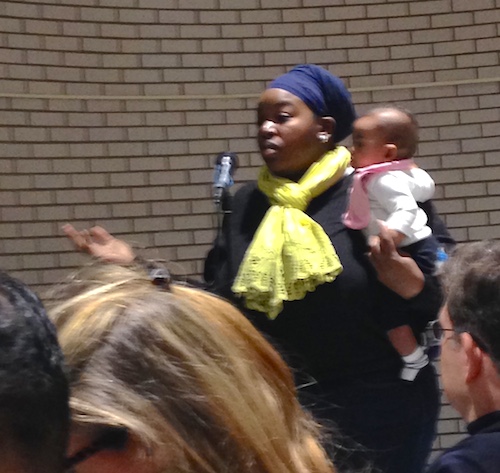 The next speaker was Nora duCreme, who is pictured at right. “I’m a fourth generation Harlem resident with a child in pre-K,” she told the panel.
The next speaker was Nora duCreme, who is pictured at right. “I’m a fourth generation Harlem resident with a child in pre-K,” she told the panel.
“How is the policy of choice going to effect equity? Harlem is disproportionately populated by charter schools. Going to my zoned school really means there’s a strong possibility my child is not going to be equitably educated.”
“I have sought alternatives and my concern is that once this program is implemented, families with the means to move out of the district will begin to do that. This is more a resource issue than segregation issue,” she said.
“The term controlled-choice is distinct from freedom of choice, to avoid confusion with school districts conforming to Brown [vs. Board of Ed],” Alves replied. “In NYC you have a lot of choice, choice on steroids, but it’s a blind choice.”
The District needs to go through a planning process, he said. “What can we accomplish? It needs to be a collaborative effort. Whatever you come up with will be better and more equitable than what you have now.”
Marielle Anjula, a mother at PS 145, also spoke. “We’ve been here three years. In my opinion, it is most important that my child is treated very fairly in schools. Most important are their feelings and that they’re happy. Children that are happy will make them people who will have respect for everybody.”
Lisa Case, the PA President at PS 145, has a daughter in kindergarten. She noted that the parents had only heard about the meeting a week earlier and suggested that outreach to parents needed to be more inclusive.
Emmaia Gelman, who has been working on the parent leadership taskforce for over 2.5 years, criticized the CEC3 for setting up a panel rather than creating an environment “where people can talk together rather than be talked at.”
“It’s an iterative process,” she said. “You can’t have this conversation until you talk to the people who are impacted.”
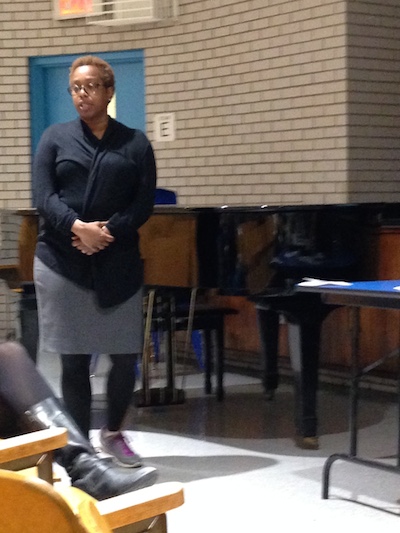 Theresa Hammonds (at right), chair of the Health and Wellness Committee of CEC3, stood to comment.
Theresa Hammonds (at right), chair of the Health and Wellness Committee of CEC3, stood to comment.
“As a CEC member and a parent who has worked on the D3 Equity Taskforce for the last few years, I know how hard Kim [Watkins] has worked,” she said.
“The goal is to desegregate these schools, create equitable and high quality education for every child no matter where they live. A family resource center comes along with this process. I’d like to know how it would work in the community?”
“When we started in Cambridge in the 1980’s, we found we needed a parent information center – it’s one of the central components if you’re going to enable all parents to participate, make informed choices, and help the schools,” Michael Alves replied.
In CEC1, Donlan added, they started with workshops, not a panel.
“In order to address the gaps in student achievement, people are going to have to make informed choices. It is not going to be the wild, wild west. The question is how do we strengthen all of our schools. Right now, the DOE just tells your children where to go,” she said.
Alves concurred, controlled-choice is not just matching a child to a school, but matching a family to a school. That’s why we have family resource centers in every school.






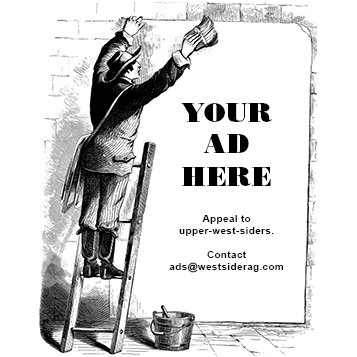
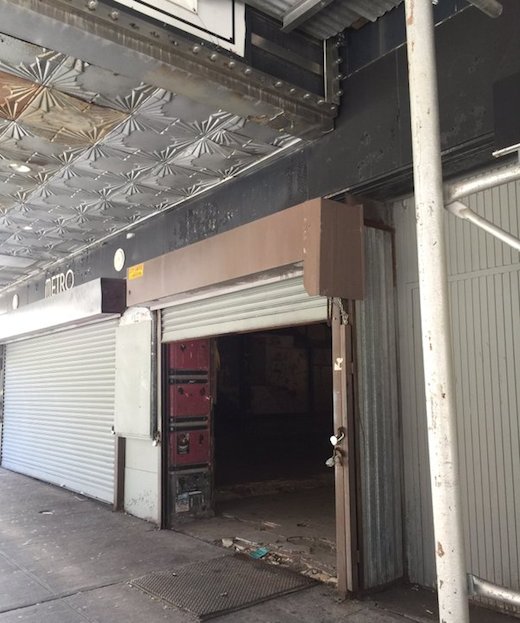

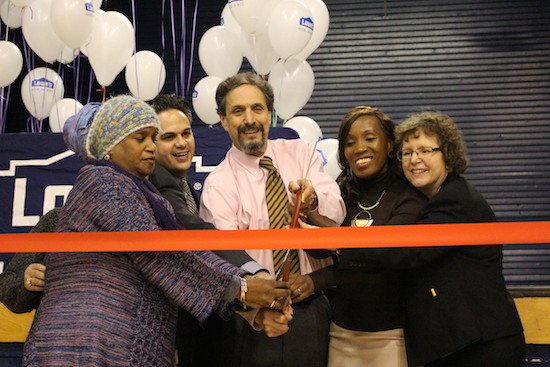
I think you mean “Brown [v. Board of Education]”, not “Wade”.
Thanks, momentary brain lapse.
Encouraging news!
I think the changes to the UWS schools will be painful. I think there will be some “white flight” when families don’t get into one of the few schools they find acceptable in the first couple of years. But public school has to serve all the kids, not just the rich white kids currently zoned for PS 199, 452 or 87. Eventually the UWS will be better off if we find a way to deal with this now. Short term may be difficult
This is going to be a race to the bottom – we will end up having a number of mediocre schools. I am all for diversity and that is part of why my children are in public school, but I will not have my children trekking to the far reaches of Manhattan to force through this agenda. While they are at it, why don’t they integrate the whole city and send kids from the UWS to the South Bronx? We love that our kids can go to the neighborhood playground and bump into many of their school friends – there are many families who turned down G&T placements for just this reason. And the money spent bussing kids around the UWS to achieve these goals would be better spent in the classroom.
I am hoping that if this happens, it won’t be until after my kids are through the system, but if I am wrong, I will likely vote with my feet and change schools or move, assuming my apartment has not lost all of its value. I am sorry to sound spoiled and entitled, but I have a feeling I am far from the only one.
Bussing was a failure in Boston during the 1960’s…begin there and discuss….
Sad but likely accurate. On the positive side, your apt will likely continue to grow in value because as mediocre as the education may become, it will still be better than many other areas of the city
The children who attend make the school good or bad. PS199 is good because the students have concerned parents. Conversely, schools which do not perform well have students with parents less concerned. We make a big mistake when we forget this. It’s not the school, its the students. Anyone who thinks otherwise is blind.
Today, a school really does nothing more than issue homework and go over requisite material. There is very little done in the way of teaching individual students at ANY school. Good students are typically students who have STRONG parental involvement after school with their child. Of course some kids do very well on their own, but such students are the exception. Almost all PS199 parents help their children with homework.
“Good” schools are NOT the result of PTA money, good teachers, etc. I am sure that the elementary school on 61st has some great teachers. I have walked into that school and have felt the amazingly caring vibe and seen the beautiful pictures on the wall. I would bet my life that that school is no worse than PS199. The fact that that school’s students do not perform well or that the school has had numerous enough violent episodes HAS NOTHING TO DO WITH THE TEACHERS, ADMIN OR FACILITY. IT HAS ONLY TO DO WITH THE STUDENTS. IF YOU REPLACED CURRENT STUDENTS WITH PS199 STUDENTS, YOU WOULD SEE IT PERFORM JUST AS CURRENT PS199 DOES.
So, take those students and spread them around if you want, or don’t. It doesn’t really matter. The truth is that a student isn’t going to get any worse or better education in any NYC public school. They may get bullied more or less, depending, however.
So I looked up my zoned high school and it’s Edward Reynolds. Currently 1% white. How is this even possible? It’s not close to reflecting the racial mix in Manhattan Valley.
When I was a small child in the early 1970s I lived in Brooklyn. My neighborhood and the school I attended were virtually all white.
Some folks decided to do some social engineering and kids from Brownsville were bussed into my school. Within a couple of years my school went from all white to about 50% white. There was an immediate “white flight” from the area (including my family).
Today the school I attended and and my childhood neighborhood are unrecognizable.
I wonder if all the UWS liberals who are so in favor of changing the demographic composition of the schools ever had the same experience I had as a child.
S. Carm, While I agree that some kids are inherently more academically inclined than others and come from families who value education I disagree that what school they attend doesn’t matter. My child’s school has a designated rooms and teachers for art, science, and music. Not all do. They have a well stocked library. Not all do. They start playing instruments in the 4th grade. Not all schools have this. They get services if they have an IEP. The NY Times reported this week that 40% of the kids recommended for special ed services do not get them. The quality of schools vary widely.
Scott – Obviously you are not a parent. High schools are not zoned, not even by district.
Couldn’t stand living or going to school with those “scary” people of color from Brownsville? Maybe it’s time you flee again, about to happen on the UWS.
Amen
There are only so many PS199 students to go around. They cannot be manufactured like fast-food and spread around District 3 schools to cure the district’s ails. DOE needs to step up to the plate and fund all schools equitably instead of under fund schools like PS191. As I have said many times before, parental involvement is key to a schools success. And the fact that a school is in the neighborhood of where the kids and parents live is significant in terms of parental involvement. That has been the key to PS199’s success. It is my hope that the parents and other non-parental commentators involved in this dispute would get rid of their victim mentality and get involved in their local school in the way PS199 parents do. When that happens, these under-performing schools will succeed in the manner that PS199 does – and in their own way.
The DOE does fund all schools equally with the exception that Title 1 schools get extra money. The imbalance is in the form of contributions. If you want to take the money that the PS 199 PTA collects and spread it among all schools it won’t go far and the 199 parents won’t give nearly as much. Rather then donate $1500 so there school can have extras like music and assistant teachers they’ll use that money towards private piano lessons and tutoring.
I’m interested in the comments from parents from PS145 and the mom from Harlem. Having a community-driven process is so critical. My experience in Brooklyn is that is that it is not just “privileged” parents who feel real connections to their neighborhood, zoned public schools. Parents across the economic spectrum often feel that connection, even at the same time they may feel the quality of that school doesn’t always meet their expectations.
The funding piece may also be overstated. PTA funding can be very big; Title I funding is also very big. And thankfully, Fair Student Funding in NYC takes into account student need, so schools serving needier populations get more money per student under the formula. Now if we could only get all schools to 100% of their Fair Student Funding. I’d be interested in a comparison of D3 schools overall — operating budgets divided by # of students, to get a baseline sense of whether PTA dollars mean that a school like PS199 or PS87 has much more money per student than a school like PS191. Or if it just means those schools are better able to make up for the gap they have between what they get and what they would get if they had 100% of their Fair Student Funding.
Don’t get me wrong, I think diverse students bodies will benefit everyone — I really do, for a host of reasons — but I don’t think it will cure underfunding issues at all; without changes to the ways schools are funded in NYC, my guess is that it could actually hurt funding (as someone pointed out — diverse schools often don’t qualify for Title I and don’t have wealthy enough families to make up the gap with parent fundraising).
I’ll be interested to see how this all unfolds.
True–not a parent. Still, 1% white? Do these parents understand how this is perceived?
Important and comprehensive coverage. Thank you, West Side Rag and Jessica Brockington and involved commentators.
In response to @eddie, comment #2 above.
The article says all the schools are within a block of one another. How is busing involved?
Is there a tax exemption for childless New Yorkers that I don’t know about? I’m white (not that it should matter) and I don’t want my tax dollars supporting segregated public schools in 2016.
sorry, comment #4. Nested replies, we miss ’em!
to S. Carm:
I have been in administration and education in both public and charter schools. I have worked in some of the richest neighborhood public schools.
Yes – the students matter. But you have NO IDEA the kind of difference a PTA war chest of $2 million makes.
The parents of the students I taught at a low-income school in Manhattan were PLENTY involved in their students lives. (Sometimes annoyingly so– just like some parents can be in any area.)
But the improvements to the schools, in appearance, in programs — such a difference. We were able to have a drama program, a robotics class, a “journalism class” all funded 100% by the PTA when I was at a school in the UES.
What a shock that was compared to when I worked in a low-income neighborhood.
Throwing money at the problem doesn’t always work. But if you don’t think having a big budget doesn’t help, I’m afraid you’re terribly, terribly mistaken.
This is a reply to Jennifer S. comment #20:
Yes, my post failed to state clearly that PTA money DOES matter, and it is VERY unfair that PTA’s are allowed to give money in my opinion.
BUT: money makes NO difference in terms of the type of failings that poor schools see. NO WAY ON EARTH.
School performance is based on math and english scores via NYS tests. Learning those necessary things has NOTHING to do with money. It has everything to do with students who WANT to learn and parents who NEED their children to learn. YOU COULD TAKE AWAY ALL PTA FUNDING FOR PS199 AND IT WOULDN’T MEAN ANYTHING TO THOSE KIDS GRADES, BELIEVE ME.
This is the dirty little secret in all of this. PS199 is a good school because of the concerned parents who bring their children there. School is not some magic place that turns kids who do not want to learn into kids who do want to learn. Sure, a good teacher can make a difference, BUT NOT MUCH.
What is being talked about is spreading committed students around so that schools which have STUDENTS WHO PERFORM BADLY will look better on paper. But is that fair to people who want their students to be around other students who WANT TO LEARN? And what happens in the end anyway? People leave and regroup to get into better environments or maybe more people go to private school.
With this kind of “spread the good students around” mentality, and the talk of now FORCING good students to be in schools with lots of non-caring students, you can be sure that private schools are going to be continuing to increase in number in the city.
Let’s focus on the REAL issues why some schools don’t perform well and let’s tackle the real issues. I’d be for all schools to be entry performance based and for disallowing ANY PTA or extra funding. All schools get the same money per student, period. Let all the kids who don’t want to learn be with all the other kids who don’t want to learn. This is something that i think is fair to everyone, regardless of race. i’ll bet a lot of poor people would LOVE to have merit based school entry.
@Margaret: The article says that in CEC1 (which is believe is the lower east side) has schools that are very close together and no zoning. Our district stretches many blocks, and you get bussed if you are more than 1/2 a mile from your school. Zones are currently very compact so bussing is not really an issue. If there was some form of district-wide choice plan as is being proposed, there would be much more bussing so that, for example, a student on 115th Street could attend PS 87 in the upper 70s. Since you write of directing your tax dollars, is this what you want your tax dollars spent on?
@Eddie, I for one would be happy to spend my tax dollars on getting the schools more economically and racially integrated.
People are acting here like controlled choice has no distance limitations. The DOE, for example, can make the limitation of half a mile, 3/4 of a mile or a mile. That’s 10, 15 or 20 blocks.
It is really simple. You get a free or reduced metro card from the city. These are also busses that are already running. You know how it works, right?
Sure you do. Our kids as UWSers do all the time to visit friends, go to restaurants, after school activities, museums. If you cannot walk 15 or 20 blocks or learn to take the 104, 7 or 11, bus on a daily basis, you belong in the suburbs.
Controlled choice can also be set up so that students can request entrance into a school much further away, but cannot be forced to do so.
Finally, controlled choice does not have to be district wide. It can begin in a segment of 2 to 4 school zones.
Oh, I see. Thanks Eddie.
Yes, I’d rather bus as needed than maintain schools that are segregated.
Another benefit of the White Flight is the easing of the housing shortage.
People are acting here like controlled choice has no distance limitations. The DOE, for example, can make the limitation of half a mile, 3/4 of a mile or a mile. That’s 10, 15 or 20 blocks. More likely it would be no more than 15 blocks.
It is really simple. You get a free or reduced metro card from the city. These are also busses that are already running. You know how it works, right?
Sure you do. Our kids as UWSers do all the time to visit friends, go to restaurants, after school activities, museums. If you cannot walk 15 blocks or learn to take the 104, 7 or 11, bus on a daily basis, you belong in the suburbs.
Really, how many parents at Calhoun or Trinity do you think live within 10 blocks of their school? Don’t hear them complaining.
Taking a 15 block bus ride is so hard for rich kids who want to go to preserve their privilege, but it is okay to spend 2 months on a bus for 1.5 to 2 hours a day to go to that posh 8k summer camp in the burbs.
Controlled choice can also be set up so that students can request entrance into a school much further away, but cannot be forced to do so.
Finally, controlled choice does not have to be district wide. It can begin in a segment of 2 to 4 school zones.
@L “Really, how many parents at Calhoun or Trinity do you think live within 10 blocks of their school? Don’t hear them complaining.” They chose to go to those schools. You also wouldn’t hear complaints from families living in a now undesirable zone who’s kids choose a better school. The complaints as will be from families who are happily in the 199 zone now and get a less desirable placement. You aren’t comparing apples and apples.
“Taking a 15 block bus ride is so hard for rich kids who want to go to preserve their privilege, but it is okay to spend 2 months on a bus for 1.5 to 2 hours a day to go to that posh 8k summer camp in the burbs.” Again, the commute is worth it for something desirable. Not worth it for something undesirable. This is so obvious I’m sure you understand it. What point are you trying to make?
@confused:
That it is sometimes necessary that we make small sacrifices for the common good.
@dannyboy my 5 year old child will never be a sacrifice for the common good. I’ll stop spending at all the local shops/restaurants and just order groceries/goods from amazon and walmart to save enough money to send my kid to a good/(if that comes to mean private) school and remain in the city. And many of my friends would or plan to do the same.
@anon:
I am enjoying the image of you and your friends eating food and living from Walmart and Amazon.
Go for it!
@dannyboy, the thing is if anon and other like him choose private schools or charters or move to the burbs the plan fails. There is no mixing of the people with the money with the less fortunate. For this plan to succeed it has to be palatable to the people you are asking to make a sacrifice.
The difference to a child’s life is made in the school that they attend. The exposure to different ethnic cultures and different socio economic classes molds a child into a very special kind of adult.
Having been the PTA President at a school where we had the fight of our lives to get rid of a horribly performing Principal, I can tell you that parent involvement is everything. All the parents, not just some. You have to learn how to adjust the meetings and committees so that everyone can participate. I have learned that the difference between a successful school is the mix between strong administration, a motivated and well supported teaching staff and very, very importantly – a participating and involved parent body.
When I was PTA president, we rotated evening and daytime PTA meetings. We had classes for parents in skills that were needed, which were taught by professionals – from the parent body. Things like sewing, etc. And we worked hard to reach outside of the middle-class parents to get everyone on a committee of some kind at least once. We ended up turning around a school that was falling by the wayside to a school that became one of the “hot” schools on the UWS.This school was PS 75.
It sounds like the only ones that will benefit from this plan are private schools and suburban real estate agents. Aren’t busing and forced integration generally regarded as failed experiments? While some folks like Dannyboy might be thrilled at the prospect of wealthy whites fleeing the Upper West Side, I’m not sure how that actually will help the very schools that the DOE are trying to integrate. Someone please enlighten me as to how this plan will truly succeed.
Confused, I was comparing apples to apples when I differentiated how far a person could travel based on choice (people can likely choose to go further than they can be forced). My point is that saying school choice is bad because of bussing is bogus because travel distances in practice are not very long. It is just an argument that that seeks to mask the true issue of privlege that you have helped exemplify (thanks).
Walking 15 blocks or getting on a bus (if you are that lazy) is a normal part of life on the UWS. What is not normal on the Upper West Side is privleged people being told that they cannot always what they “desire” – that equal access to a quality education is a right and not a commodity – and that their child is no more deserving than any other. It is this attitude, and not the commute, that is undesirable.
That said, controlled choice systems are generally maximized for distance so the vast majority of kids are going to their local school so it is not like we are talking about a “proletariat revolution”. I am guessing you live in the 199 zone. The current system really isn’t working for people in that zone either with nearly half the families being wait listed every year, and dozens being shut out.
@L my children are out of elementary school and did not attend PS 199. I’m not exemplifying anything. I only mentioned 199 because that is the zone that complained about the earlier ideas to combine 199 and 191.
Stop jumping to conclusions.
@Imadad,
To be clear: I AM thrilled by the idea of people who threaten to leave the Public Schools rather than suffer integration, leaving.
@dannyboy, then what? I don’t think these people are necessarily racist, they aren’t willing to send their children to underperforming schools. So they leave. More seats open in the “good” schools but without the deep pockets of the families who have left these schools can’t provide what they once did.
For any plan to work it will need to be deemed good enough but the kind of families who currently fund the PTAs at the likes of 199 and 87.
@dannyboy: Your bias is duly noted. My point is that assuming rich white flight from a school takes place, out goes all that PTA money as well as the integration that people are striving for. The school then becomes just another segregated school that suffers from lack of money and programs. It might give you satisfaction that all the rich white folks are gone, but in practical terms, how (and whom) did it help?
Don’t let these threats derail integration efforts. These threats have been used throughout history.
Let the races be together. k?
Your exact location does not matter. It’s the assumptions that these posts are based upon that are the problem. My conclusion is that many people posting here are privileged – and they believe that their privilege should give their children more access to a quality education than children with less privilege.
What is really sad here is that the area that we are talking about here is only a meager 2 square miles – Only a fraction of the size of juat about all suburban towns. We are a small community in a big city and we should start acting like one.
Middle class as well as white flight from public education has already occurred. It happened many, many years ago. Most parents in D3 schools are already firmly committed to diversity. Most are also committed to neighborhood schools There is a separate and parallel educational system of private and religious schools that a majority of those other students already attend. Trinity and Collegiate are as similar to each other as PS191 and PS199 are similar to each other. Let’s stop fooling ourselves! Columbia Grammar neighbors complain about chauffeured cars blocking the streets. No one living near PS87 or PS165 make such complaints. Collegiate School can pay 50 million dollars to change the intent of a ULURP but there is no PTA in the district that could raise that in the aggregate in fifty years. Time to get real and stop fighting each other. Let’s ask where the money from the Fiscal Equity lawsuit is and no one will be looking at one PTA or another. It is all in the hedge fund pockets at the Daltons and Spences of our city.
@L, the privileged people you refer to will get their children access to high quality education. If the public school they are assigned to isn’t high quality they won’t use it. That is what has happened in the PS 191 zone. New expensive condo all around it but not one child living in them goes to 191. They find other options. If the integration is done in a way that they think will bring down the quality of education the parents bankrolling the PTAs at the richer schools will leave. To help the less privileged kids the integration needs to be done in a way to make the over privileged parents believe it won’t adversely impact their kid’s educations. You can say everyone should sacrifice for the common good but saying so won’t make it happen.
@anon Your 191 example is perfect for showing how great controlled choice would work on a smaller scale. You now have 2 schools that are in the same zone (with a new facility opening). The problem in the lower part of the district is not that there are very many low socioeconomic kids, but that they are concentrated in one area.
Use controlled choice in a shared zone and you can evenly distribute kids by socioeconomic status. Then when over 1/3 of 199 is rezoned to that area, the concentration of poverty in one place is eliminated.
It is not controlled choice, but overcrowding (and necessary rezoning) that is going to be shifting families in this case to a less coveted school than 199. It is controlled choice that can ensure that the switch is successful.
L.
@L, I agreed that combining 199 and 191 (and perhaps the new school but it won’t be ready until 2018 and something needs to be done before that) would work because the population of 199 is much greater than 191. The million dollars the PTA raises could be spread to make things better for the 191 kids without taking much away from what the 199 families have come to expect. However, the demographics of all of D3 are different. The plan as I read it is about all of D3 being one big controlled choice zone. That would mean some kids travelling much further than 15 blocks to school. FWIW, for the youngest kids starting k a half mile walk after 6 hours of school is tough. If the UMC parents revolt as we saw the 199 parents do about the previous plan nobody will be helped by the new plan.
Anon, I said use controlled choice to determine who goes to 342 and 191 in the same zone. I did not say combine 199. The 342/191 zone gets blocks from 199 but is not combined with it.
Even of controlled choice is implemented district wide, there will be strict limits to how far you can be forced to walk/take a public transportation like 10 to 20 blocks. Others who seek greater opportunity can request a spot at a school further than that. Talking about kids going 40 blocks away is a scare tactic.
It is a tweaking in which the vast majority of kids go to the closest school. However, the overcrowding situation that is caused by people pouring into some zones and avoiding others means that lots of people are not getting their school of choice now either. It is not just about equity but reducing overcrowding.
So you wouldn’t anything until Sept 2018 when 352 opens. As you’ve said there is overcrowding in 199 today. An entire class of kindergartners had to go elsewhere this year. Why exempt 199 from the combination zone and why not do it sooner than 2018?
Anon, I was just giving an example of how controlled choice can work within a shared zone. The point that I was trying to make could work with two schools or 3.
At a very minimum, the use of controlled choice answers a question that needs to be addressed immediately – which children will be going to 342 and which to 191?
Rezoning is possible in 2017. In 2017, there is only one school in that zone, so controlled choice is not an option. So rezone in 2017 and institute controlled choice in 2018 when there is a choice to be made about who goes to which school in that zone.
This is an example of where controlled choice does not cause white flight, but amends it. We already have white flight in the 191 zone because of the concentration of poverty. Controlled choice helps encourage the rezoned 199 families to try out 342 and 191 by creating an equal distribution of poverty. High socioeconomic parents will be in the majority, reflecting the broader population of the area.
You say we will have white flight, but that is already our problem. There are so many zones where the school is not representative of the diversity of the surrounding neighborhood.
Yes, many families in overcrowded zones who are assigned a less coveted zone are going to leave the public school system. But the flight of that family is not going to adversely affect the school in the coveted zone that was overcrowded anyway. I am sure schools like 199 do not care if the two dozen families that are turned away go to their alternate placement or a private one.
Many families will go and increasingly so over time. This is especially so because a good amount of families just like them (from various schools) are assigned to the school at the same time. You get over the problem of feeling like a pioneer.
Let’s not pretend that it is not possible for many of these schools in already gentrified neighborhoods to gentrify. This helps fast track the school acceptance and renewal process that all of our currently coveted schools have gone through.
I want my kids to have the best schooling that I can afford to provide. I
believe in public education. I was both lucky in my lot in life and worked hard
to maximize my opportunities. Consequently, I can pay and choose to pay premium
rent so that my kids can attend excellent public schools. Further, I can donate
and choose to donate to our PTA. Why is it distasteful and to be discouraged
when many like-minded families gravitate to a school producing above-average
outcomes? I assure you the phenomenon cannot be stopped.
Suppose controlled choice is wildly successful and all of District 3 becomes a
utopian island of public education. In this hypothetical future, wouldn’t
families like mine gravitate to District 3? District 3 would become an unfairly
economically advantaged area as families with the means to pay rising rents
drive out the ones that cannot.
Recall that District 3’s boundaries are just as artificial as those of PS 199 or
any other neighborhood school. In controlled choice’s hypothetically wildly
successful future, wouldn’t we see the same bickering about District 3 external
boundaries that we see today about District 3’s internal boundaries?
Ah, but then a controlled choice purist would point out that there should be no
District distinctions. District 3 should enter into controlled choice
agreements with other surrounding districts so that they too may reap the
benefits of central school assignment planning. Running an optimization
algorithm to build each classroom from 27 kids strewn across the 5 boroughs will
certainly, in controlled choice’s far future, produce the best aggregate
educational outcome for the whole city.
But today I’m worried about the best outcome for my kids. And I will not let it up to chance: Should zoning be
reworked so that the quality of my kids’ schooling becomes deliberately a matter
of chance, i.e. controlled choice, rather than accidentally a matter of chance,
e.g. school crowding limitations or teacher-specific variability, I will move
elsewhere.
You’re welcome to dislike me for my position as it’s based upon love
for my own children over love for the ideal of equality. Hell, I dislike me for
my position. But I’m their dad, see.
A thought experiment, I don’t dislike anyone. Everyone has the right to feel as they do and act as they want at an individual level. Your voice matters. What I am saying is that yours (which may be coming from a place of privilege) is one of many that matters. It is okay to feel that way, but it is important to recognize what the underlying assumptions are – and that our 2 square mile zoning map is set up to disadvantage the poor while preserving privilege.
The DOE or CEC3 has the responsibility to think on a broader level and one of their primary jobs is to ensure equal access to quality schooling. It is not their job to preserve the privilege of the minority of families that are well served by the current system.
That’s why the CEC will be considering this as a district or partial district solution.
This is the mission statement of our CEC3
Community Education Council 3 (CEC3) of New York City believes that every child is entitled to a high quality education, a safe and healthy school environment, and equal educational opportunities. The mission of CEC3 is to promote and support the educational needs of District 3 elementary and middle school students by representing and advocating for District 3 families to the NYC Department of Education.
L, I don’t think anyone on here is against providing a high quality education for every child. The question is “how?” The posters saying they won’t be a part of a system that sends their child to an underperforming school matter. If white flight happens nobody wins.
Of course you dislike yourself for your position. That is your conscience at work.
Public Schools’ purpose is to educate all the children and have them educated together to strengthen our common purpose.
As you can tell, money and zoning have diverted those goals, for the benefit of a very few.
After literal trillions spent and knots tied and then untied, and still the playing field cannot be leveled. There’s a rational conclusion here that will never be acknowledged. Again, nice guys finish last.
L, my point is that any boundary-based system will eventually be taken advantage of by families with the means to relocate inside advantaged regions. Making District 3 homogeneous simply means the choice becomes District 3 vs elsewhere. Controlled choice benefits the district if the homogeneous result is superior to other districts. But should it become superior all that’s happened is District 3 starts attracting families at the expense of other districts and to the detriment of 3’s affordability. Controlled choice, should it work, fundamentally solves nothing– it simply moves the contentious boundated to the district-level a few decades from now.
A thought experiment, Controlled Choice cannot make District 3 homogeneous because it is not a mass reordering of the location of all children because there are strict distance limitations. It is a tweaking that could introduce more children from low socioeconomic kids to coveted zones, while simultaneously introducing more high socioeconomic kids from overcrowded areas (especially overcrowded ones) to areas up to 10 15 or 20 blocks away from where they live.
All schools become more diverse than they were before, but by no means can they be homogeneous with distance limitations and major differences in the overall makeup of neighborhoods between 59th and 120th street. This simply speeds up the gentrification process that has been happening within District 3 schools, most generally from the south up northward.
Yes, this may make District 3 more coveted as a district for families from both within and outside the district, which is fine. Families who would not have normally considered their local school zone will start doing so – because many families are in the position to do that at the same time. When downtown families decide they want to move to the “Upper Breast Side” as the movement often goes, they will have more choices of high performing, integrated schools. We should see less overcrowding in the lower part of the district as families are drawn to more public schools further north.
@jlj You say after trillions spent the playing field still can’t be leveled?
I disagree completely. The playing fields ARE level. The admins and teachers at these low performing schools are just as good as the teachers at other schools. The difference is the student at each school, not the teachers.
Your post is an example of why things never change: instead of putting responsibility where it should be, people like you always blame others.
There is a reason why the elementary on 60st had enough violent episodes that it triggered some state intervention. That reason has NOTHING to do with the teachers, the administration, an uneven playing field, or the lack of PTA money.
S. Carm, #48: I think you misunderstood what “jlj” was actually saying.
If all that’s important is 2 extra million a year, the city should just provide that. It will be much cheaper to give ps191 2M then to rearrange all the schools and bus the kids. Especially if you factor in the white flight and loss of taxes. Also don’t seen the issue with a 99pct minority school. In my experience, black parents care a lot about their children’s education, so their being a majority in the school is not a issue.